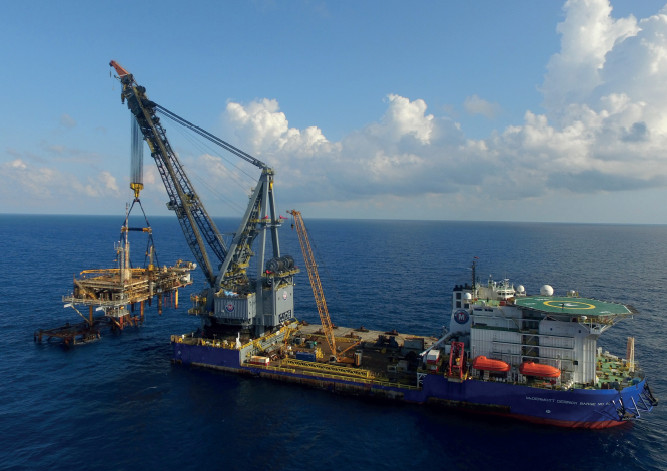Type of vessel: Crane barge
Built/Year: UK-1986
Gross Tonnage: 29722
Crew members working on
this project via iPS: 27
Official Flag: Panama
McDermott Derrick Barge 50
Definitely the biggest vessel at sea
Built in 1986, it may not be the youngest vessel at sea, but it is definitely the largest. With an overall height of 497 feet the vessel stands out in the Gulf of Mexico, its current location. For
the past three years, iPS has been providing crews to work on the McDermott Derrick Barge 50.
Allen Carvalho, crewing manager of McDermott, speaks of the vessel with appreciation: ‘It’s a big beast, but it picks up a lot of work. Throughout the past 33 years the vessel has been modified to meet modern standards. The size of the vessel and its crane make it the largest in the Gulf of Mexico. For that reason, it is the primary choice of our Oil & Gas clients.’
Over the years, McDermott has developed a close relationship with iPS. Allen continues: ‘Three years ago we were desperately in need of a crew in Mexico. The iPS team in Mexico jumped in and delivered what they promised. Response time was – and remains – fantastic. iPS has been a solid partner for years, with their up to date knowledge of compliance, large network of high-quality employees in Mexico, involvement in making projects succeed and a way of working that unburdens us. They use the same standards as we do at McDermott. Trust is high, as it needs to be. Without crewing partners such as iPS we can’t meet the needs of our partners. The McDermott Derrick Barge 50 faces challenges, like every other project. Allen explains: Crewing is a continuous challenge. With a 6 to 8 week standard rotation schedule and maximum capacity of 320 people, it is essential to plan ahead and always have a well-prepared plan B. Deadlines are tight, and if these are not met, the consequences can be serious – so that’s not an option. This requires flexibility and the ability to find alternatives at short notice.’
Allen continues: ‘Furthermore, because the vessel is moving between the US and Mexico, we have projects on both sides of the water. English is the common language and all paperwork, such as visas and compliance forms, need to be in order. Building up a sufficiently large database of staff that meet those demands – and all associated processes – requires a great deal of groundwork and time. iPS supports us in this area. They advise, provide access to an interesting network and take the burden of selecting entire teams out of our hands. With iPS, we can count on high-quality crews with the correct papers and the right work ethic to do the job. That saves us a lot of time and headaches.’
What does the future look like for McDermott Derrick Barge 50, which has been around for the last three decades? ‘The vessel is definitely up for the years to come’, Allen says. ‘With the industry continuously growing in recent years, we’re doing well. We’re getting busier by the day. The scope of work is expanding on a global scale to Asia and the Middle East. So, there are still plenty of opportunities for this vessel. And the same applies to us.’
